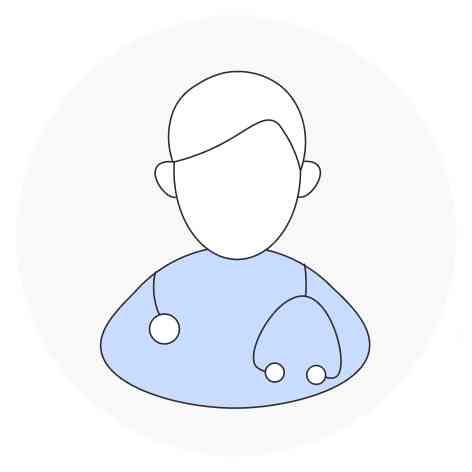Discover advanced Obstructive Apnea surgery solutions to relieve pain and restore comfort. Our expert team specializes in minimally invasive procedures, ensuring effective treatment for corns and related foot conditions to improve your quality of life.
Book Your Free Second Opinion
30k+
Surgeries Done
50k+
Departments Treated
150k+
Conditions Treated
3k+
Specialist Doctors
200+
Cities
Obstructive Apnea Introduction
Obstructive apnea, a common type of sleep apnea, occurs when the throat muscles intermittently relax and block the airway during sleep. This obstruction can lead to pauses in breathing and disrupted sleep patterns. It is important to address obstructive apnea promptly as it can have serious consequences on overall health and well-being. Conservative treatment methods serve as the initial approach in managing obstructive apnea. Lifestyle modifications such as weight loss, regular exercise, and adopting good sleep hygiene practices are often recommended to alleviate symptoms and improve breathing during sleep. These strategies aim to reduce the severity of obstructive apnea by addressing underlying factors such as excess weight and poor sleep habits. Despite the widespread recommendation of lifestyle modifications, there is a noted lack of robust evidence from randomised controlled trials regarding their effectiveness in effectively managing obstructive apnea. Further research is necessary to establish the true impact of these conservative treatment options on improving symptoms and enhancing the quality of life for individuals with obstructive apnea.
What You Get From MediBuddy
Get an Expert Second Opinion
Find Top Cashless Hospitals
Find Surgery Cost Estimate
Verify Insurance Coverage
Why MediBuddy For Health Care

Enhanced Quality of Care
Constant support, a network of premium hospitals and top-tier surgeons.

End-to-End Management
Your only focus should be to go and get your procedure done. Leave the rest to us.

Continuous Guidance
Any problem you may face will be resolved with one phone call.

Easy financing support
We bring you the best deals, EMI options without compromising on quality
Types Of Obstructive Apnea
In the realm of obstructive sleep apnea, understanding the different types can provide crucial insights into effective treatment and management strategies. Here are the primary types of obstructive apnea based on underlying factors and characteristics: 1. Anatomical Obstructive Apnea: This type is primarily caused by physical factors such as a narrowed airway or excess tissue in the throat that obstructs normal breathing during sleep. Factors like older age and male sex often contribute to this type of obstructive apnea. 2. Obesity-Related Obstructive Apnea: Excess weight is a common risk factor for obstructive sleep apnea as it can lead to the accumulation of fat deposits around the throat area, increasing the likelihood of airway obstruction during sleep. Individuals with obesity-related obstructive apnea may benefit from weight management strategies as part of their treatment plan. 3. Medical Condition-Associated Obstructive Apnea: Certain medical conditions like high blood pressure, diabetes, asthma, and chronic nasal congestion can exacerbate obstructive sleep apnea by affecting the airway or respiratory system. Managing these underlying conditions in conjunction with sleep apnea treatment is essential for comprehensive care. 4. Lifestyle-Induced Obstructive Apnea: Factors such as smoking and a sedentary lifestyle can heighten the risk of obstructive sleep apnea. Smoking, in particular, can irritate the throat tissues and lead to inflammation, further compromising breathing during sleep. By recognizing the distinct types of obstructive apnea and the contributing factors associated with each, healthcare providers can tailor treatment plans to address individual needs effectively. Proper diagnosis and targeted interventions play a vital role in managing obstructive sleep apnea and improving overall sleep quality and health outcomes.
Causes Of Obstructive Apnea
Causes of Obstructive Apnea Obstructive apnea occurs when throat muscles relax during sleep, affecting several key structures: - Anatomy Involved: Includes the soft palate, uvula, tonsils, side walls of the throat, and tongue. - Airway Closure: Muscle relaxation leads to airway narrowing or closure during inhalation, reducing lung air intake and lowering blood oxygen levels. - Brain's Response: The brain detects low oxygen and briefly awakens the individual to reopen the airway, often without the person remembering the awakening. - Symptoms: This condition causes frequent snoring, snorting, choking, or gasping, disrupting sleep up to 30 times per hour, preventing deep sleep phases. This cycle prevents deep sleep, impacting health and well-being.
Symptoms Of Obstructive Apnea
Symptoms of Obstructive Apnea Obstructive apnea, a prevalent sleep disorder, manifests through various symptoms that can significantly affect one's daily life and overall health. The primary indicators of this condition include: - Loud Snoring: One of the most noticeable signs of obstructive sleep apnea is loud and persistent snoring. This occurs due to the partial blockage of the airway, which causes vibrations in the throat tissues. - Breathing Interruptions: Individuals with this disorder experience episodes where breathing stops momentarily during sleep. These episodes are typically observed by another person and can significantly disrupt sleep quality. - Gasping for Air: Patients often wake up gasping for air, a response to the reduced oxygen supply due to the breathing interruptions. - Dry Mouth upon Waking: Awakening with a dry mouth is common in obstructive apnea patients. This symptom arises from breathing primarily through the mouth instead of the nose during sleep. - Morning Headaches: Frequent morning headaches are another symptom, likely due to oxygen deprivation and disrupted sleep patterns throughout the night. - Insomnia: Difficulty staying asleep, known as insomnia, is prevalent among those suffering from this condition. Frequent awakenings during the night caused by breathing difficulties contribute to this problem. - Excessive Daytime Sleepiness: Also known as hypersomnia, this involves an overwhelming urge to sleep during the day, reflecting the poor sleep quality and frequent awakenings experienced at night. - Difficulty Concentrating: Cognitive functions, such as the ability to pay attention, are often impaired in individuals with obstructive apnea. This is a direct result of the fragmented sleep patterns and reduced oxygen levels affecting brain function. - Irritability: Emotional regulation is also compromised, leading to increased irritability. This symptom is often a consequence of persistent sleep disruption and the associated stress and fatigue. Recognizing these symptoms is crucial for diagnosing and managing obstructive apnea effectively to improve sleep quality and overall health.
Diagnosis Of Obstructive Apnea
Diagnosis of Obstructive Apnea Diagnosing obstructive apnea involves a detailed evaluation by healthcare professionals, including symptom review, physical examinations, and specialized tests coordinated by a sleep specialist. #### Initial Assessment The process begins with an assessment of medical history and symptoms related to sleep patterns and daytime fatigue. #### Physical Examination Key components of the physical exam include: - Examination of the throat, mouth, and nose for airway obstructions. - Measurements of neck and waist circumferences, as larger sizes may suggest a higher risk. - Blood pressure checks, since high blood pressure is often linked to sleep apnea. #### Specialist Evaluation Referral to a sleep specialist may be necessary for further assessment, potentially involving an overnight stay at a sleep center where more extensive monitoring can be conducted. #### Diagnostic Tests Polysomnography, or a sleep study, is the primary test for diagnosing obstructive sleep apnea. It involves: - Overnight monitoring of heart, lung, and brain activity, breathing patterns, limb movements, and blood oxygen levels. - A split-night study may be employed to diagnose and immediately trial CPAP therapy if obstructive sleep apnea is confirmed. The sleep study also screens for other sleep disorders that may cause similar symptoms but require different treatments, such as periodic limb movement disorder and narcolepsy. This comprehensive diagnostic approach ensures accurate identification and management of obstructive apnea.
Treatment Options For Obstructive Apnea
Treatment options for Obstructive Sleep Apnea (OSA): Continuous Positive Airway Pressure (CPAP): The gold standard treatment. A mask delivers constant air pressure to keep your airway open during sleep. Oral Appliance Therapy: Custom-made mouthpieces that shift your jaw position to improve airway patency. Lifestyle Changes: Weight loss, quitting smoking, and avoiding alcohol/sedatives before bed can significantly improve OSA. Surgery: Reserved for severe cases or those who can't tolerate CPAP. Procedures can remove tissue blocking the airway or widen it. Positional Therapy: Sleeping on your side can help prevent airway collapse in mild cases.
Meet Our Doctors

Dr Medha Prabhudesai
ophthalmology
38 Years
Book Free Consultation

Dr Kavita Rao
ophthalmology
30 Years
Book Free Consultation

Dr Nita A Shah
ophthalmology
42 Years
Book Free Consultation
Frequently asked questions


